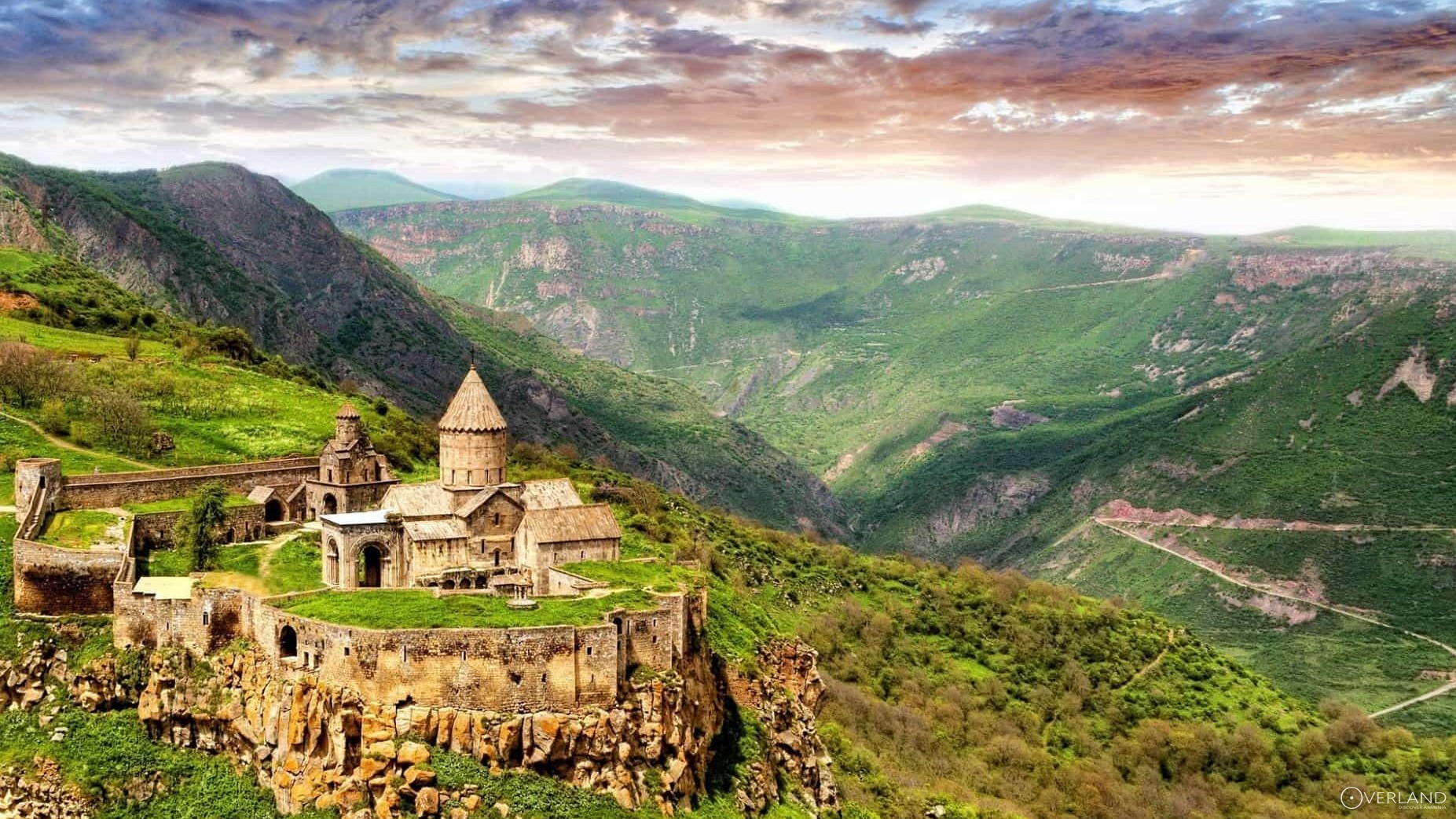
The monastery of Tatev is located in Syunik region, in Armenia. It is situated on a height, on the right side of Vorotan river's gorge. With its majestic look, the monastery rises over the surrounding mountains and keeps the peace of the nearby villages, mountains, forests, and gorges.
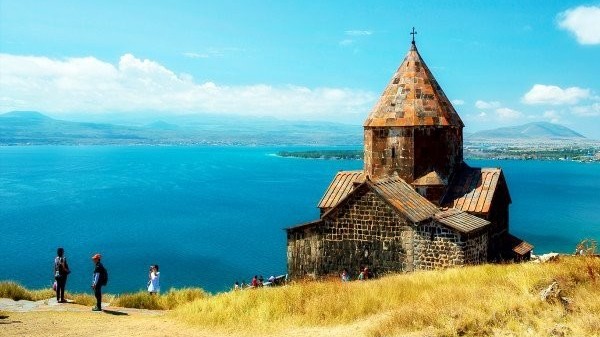
The monastery of Sevanavank rises on Sevan peninsula, which, since the lake’s water level was reduced, became an island. Excavations show that people had been living here since the Stone and Bronze Ages. The island was surrounded with fortress walls of the Bronze Age.
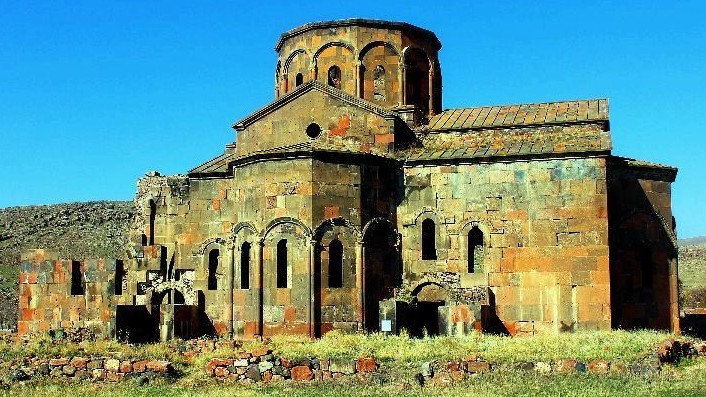
Talin's Cathedral complex Katoghike or Great Talin cathedral stands on the northern part of Talin city in Aragatsotn region. The complex consists of Katoghike, basilica church, a chamber and tombs.
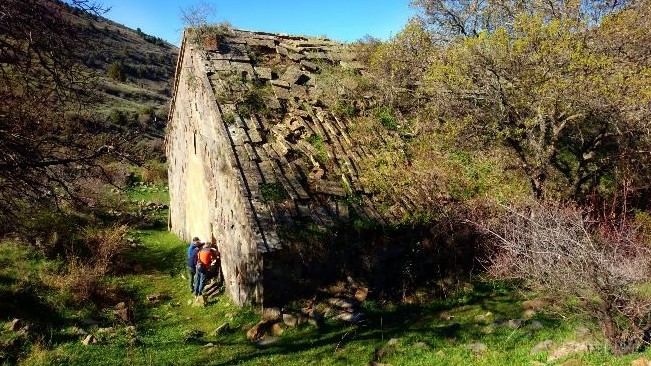
According to official information- the monastery was built in the X century, but its real history is much more ancient than we think. The monstery was a great educational centre of that region. Despite, based on some data, the real Glazdor University was situated exactly here.
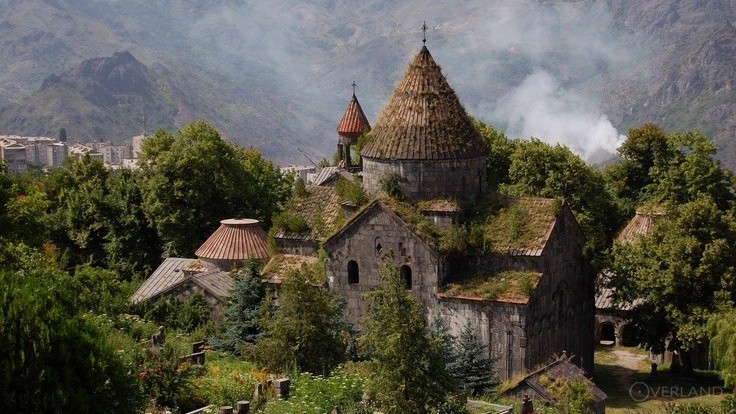
Sanahin monastery was one of the largest spiritual, cultural and educational centres of medieval Armenia. The monastery is situated on a hill, on the right bank of Debet river, from where picturesque views to surrounding forests and mountains are opened.
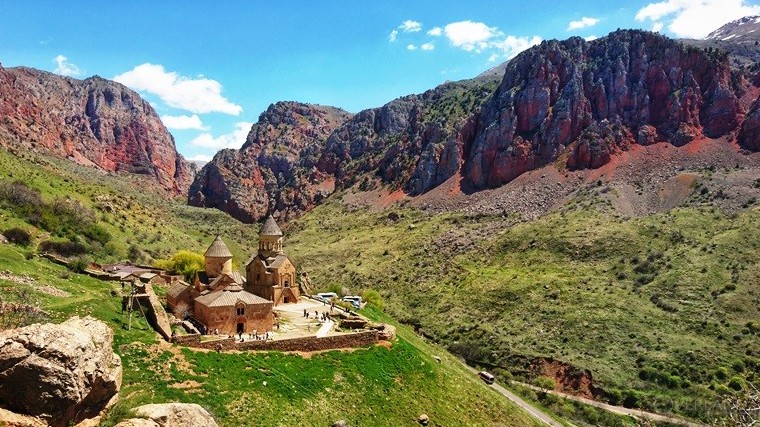
The first things that we see approaching the monastery is the dome and crosses of Noravank churches.Standing on the slope of a mountain, on a hill in a river gorge, the monastery was built of red and yellow stone. It creates harmonious integrity with the surrounding bear rocks of the same color.
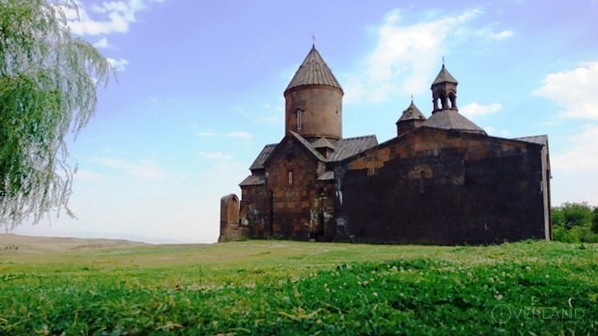
According to the legend, on the right bank of Kasakh river, there was an island, where angels lived. Gregory the Illuminator saw this place from Aragats peak and in the IV century he built a church. Gathering monks in the monastery, he thought them how to sing psalms. From here, comes the name of the monastery- saghmos-psalm.
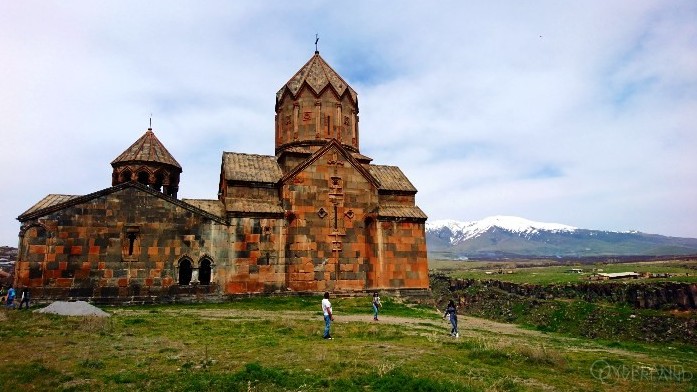
Hovhannavank rises on the edge of a picturesque plateau, on the right bank of Kasakh river's gorge. The beauty of the monastery is emphasized by the successful use of relief features during the construction. So, the modestly decorated eastern wall is smoothly continued with a picturesque rock, descending to the river valley...
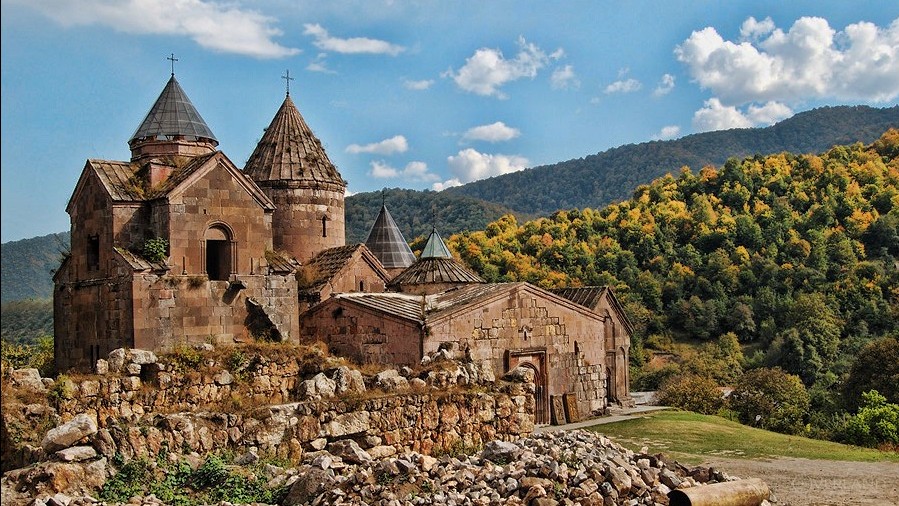
Goshavank or Nor Getik vank- a monastery complex on the top of Getik river's gorge(Goshavank village, Tavush province). The monastery was built by monks, on the place of one of the oldest shrines, which was destroyed by an earthquake.
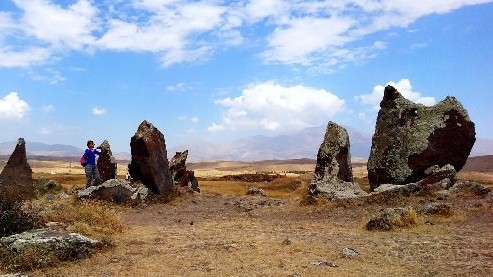
The complex of Zorats Karer is a continuation of the culture, originated in Syunik mountains near Ukhtasar mountain, from where people descended after water began to flow away. In the gorge, through which they got down, the ancient people left more semantic petroglyphs, which tell about the ancient history of humanity.
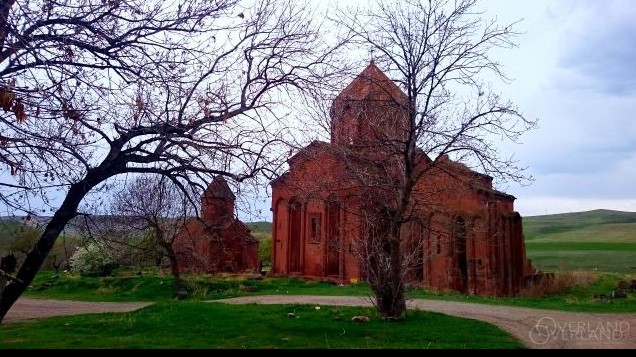
10 km west from Gyumri, stands the masterpiece of medieval Armenian architecture- the monastery of Marmashen. To Marmashen, as well as to other medieval Armenian monasteries, is suitable the harmony with the surrounding nature. It is situated on a picturesque bank of Akhurian river.
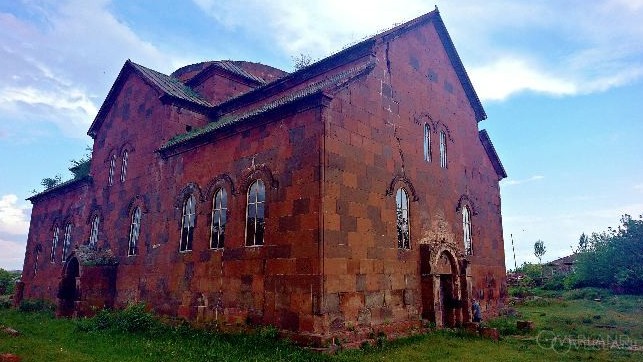
Despite the fact that Aruchavank isn't included in the main tourist routes, it is one of the masterpieces of Armenian medieval architecture. The church and ancient sites are in Aruch village in Aragatsotn region. This is one of those few places where you can see spiritual, secular and defensive monuments altogether.
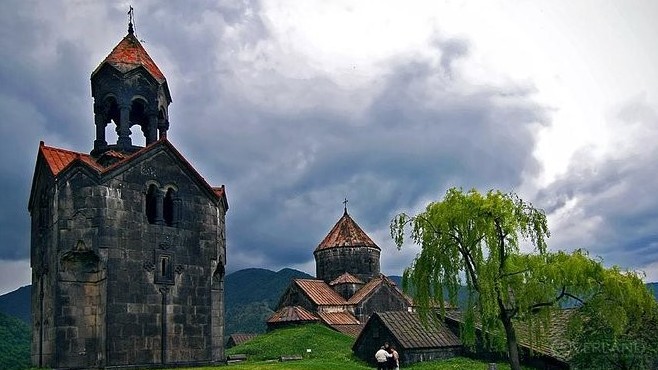
It's not only the architecture of the monastery that is amazing, but also its awesome connection with the surrounding landscape. The monastery stands on the territory of Haghpat village, in Lori region, in Armenia.
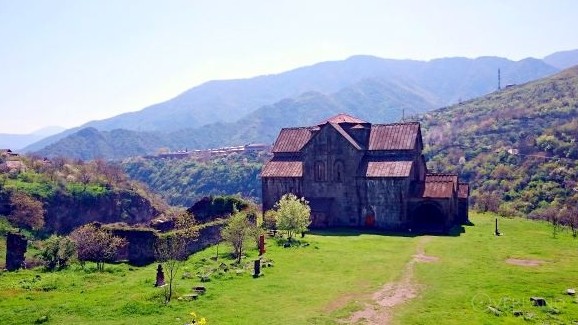
The monastery of Akhtala is in Akhtala village, on a top, surrounded with deep gorges. We can get information from historical sources, that as a settlement, Akhtala existed in the V century and was called Agarak.
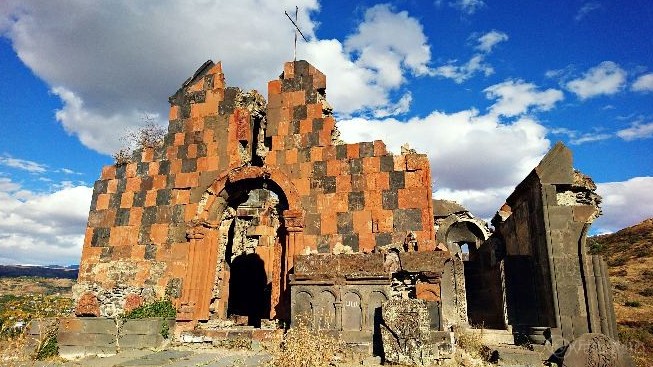
According to a legend, the monastery Havuts Tar was built by Sahak Partev and Mesrop Mashtots in the V century. And in the X century, it was rebuilt and given to a new life. The monastery is located opposite Goght village, between Garni and Geghard - in Khosrov reserve, created in the IV century.
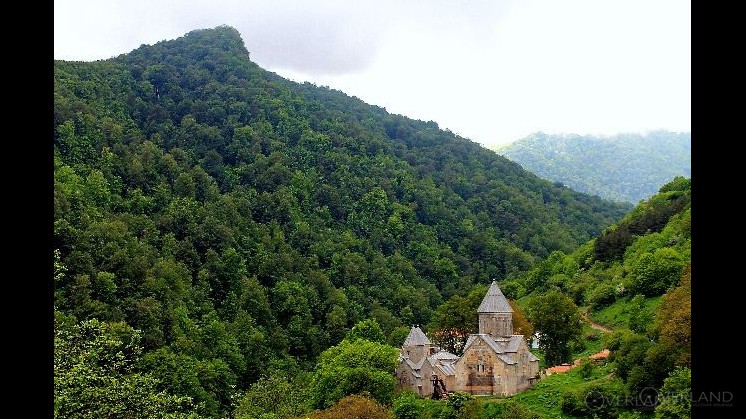
It's hard to find another suitable place for the monastery, than that amazing place, where for already 10 centuries stands the monastery of Haghartsin. It was built on a rock in Aghstev river's valley. It looks at the mountains covered with infinite forests.
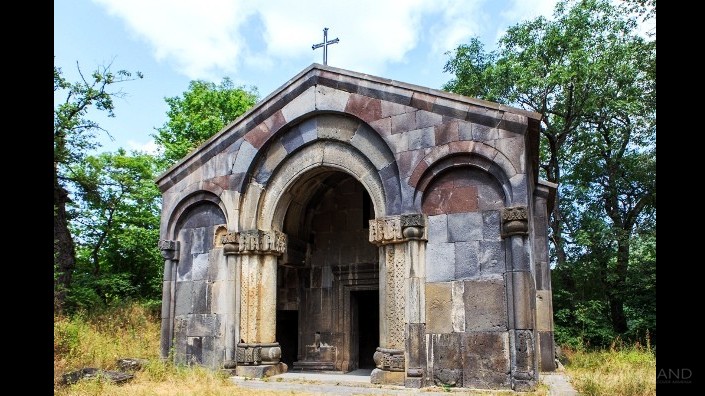
Despite its small sizes, the monastery with its distinctive and majestic look represents one of the masterpieces of medieval Armenian architecture. The monastery was built on a larger part of the branch - on the east.
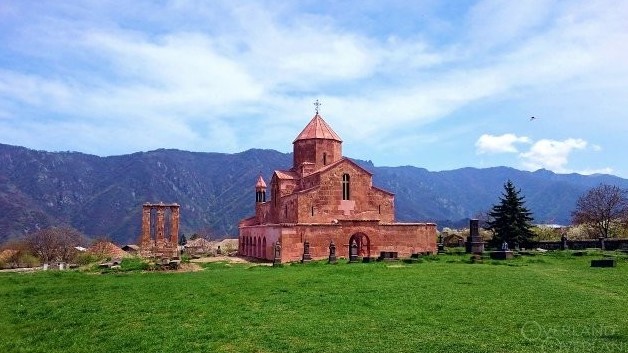
According to a legend, Thomas the Apostle in the 1st century came to Armenia and anointed local monks. Possibly, with the word otsel- to anoint, the name's origin is associated. The Apostle Thomas also brought with him a diaper of Christ, which, according to the inscription on the upper part of the southern entrance of the church, is under the church's altar.
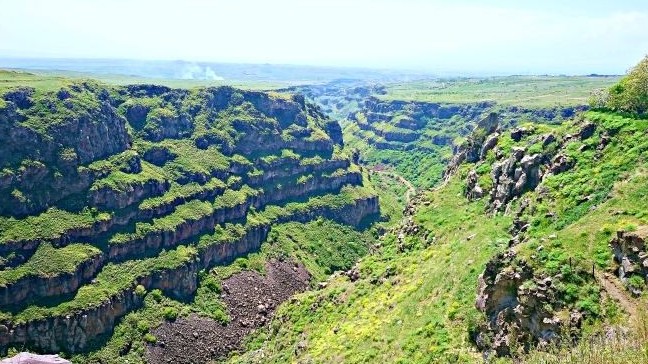
In the gorge of Kasakh river, between Saghmosvank and Hovhannavank monasteries, there is a cave complex, which locals call red temple, maybe, because of a red tuff.
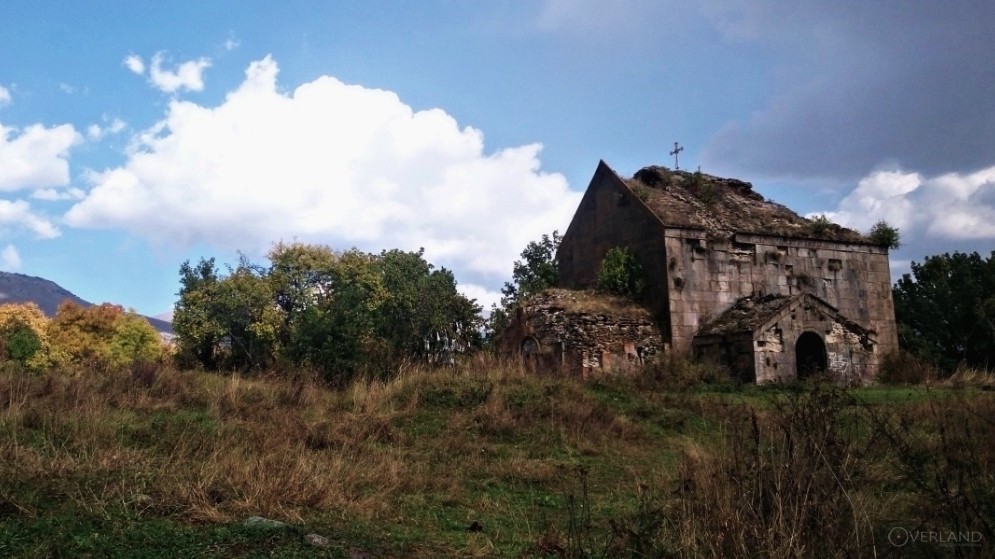
The monastery Tejharuyk is located on the forested cape of Tsakhkunyats mountain range, at an altitude of2000 m, by Marmarik and Meghradzor rivers. The monastery was built in 1190. Many gravestones of Armenian and Georgian historical figures, Chalcedonian figures are situated here.
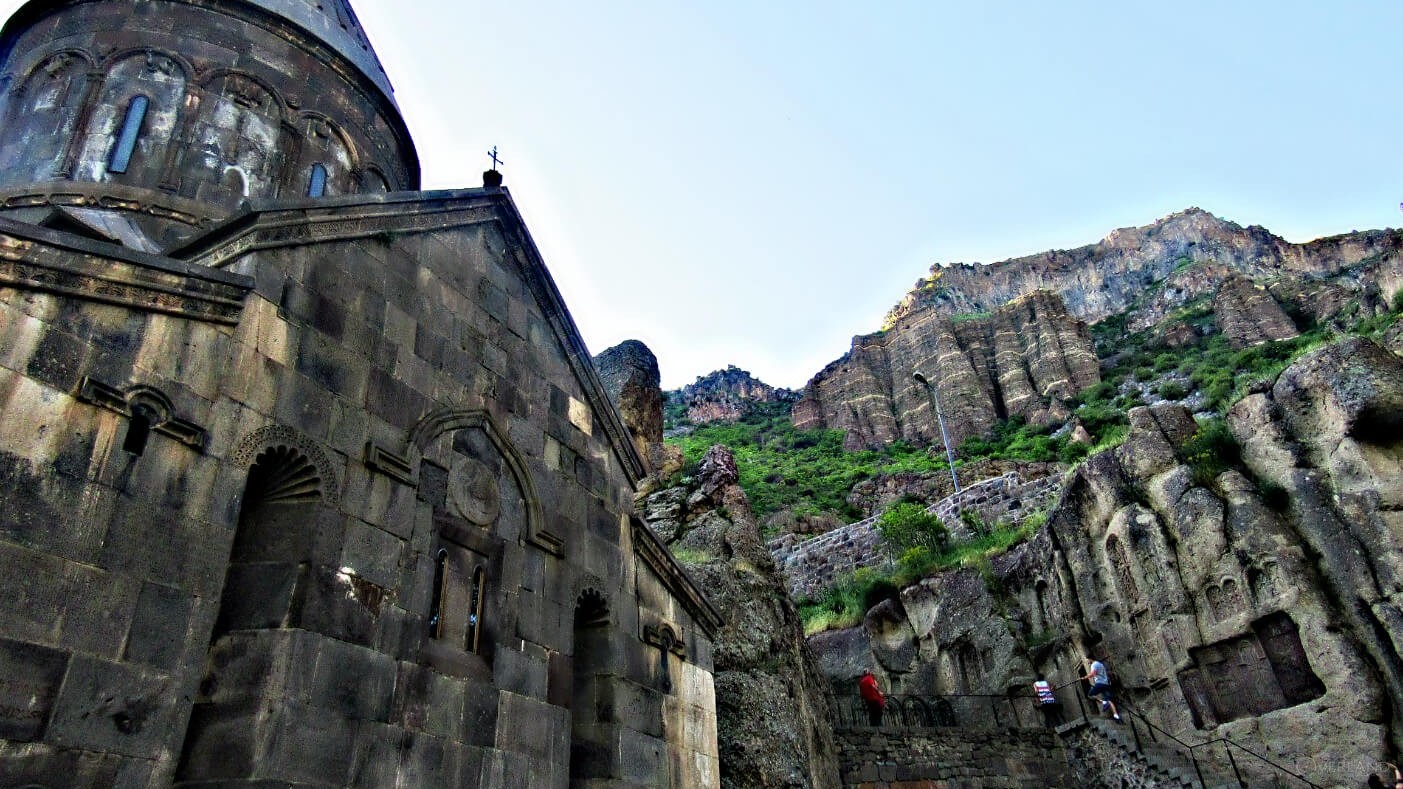
Like many Christian monasteries, Gegard was founded in the place of an ancient shrine, but this place was considered holy. Its cave part has reached us in almost the same form as it was in the 3rd millennium BC, except the crosses painted already in the Christian period.
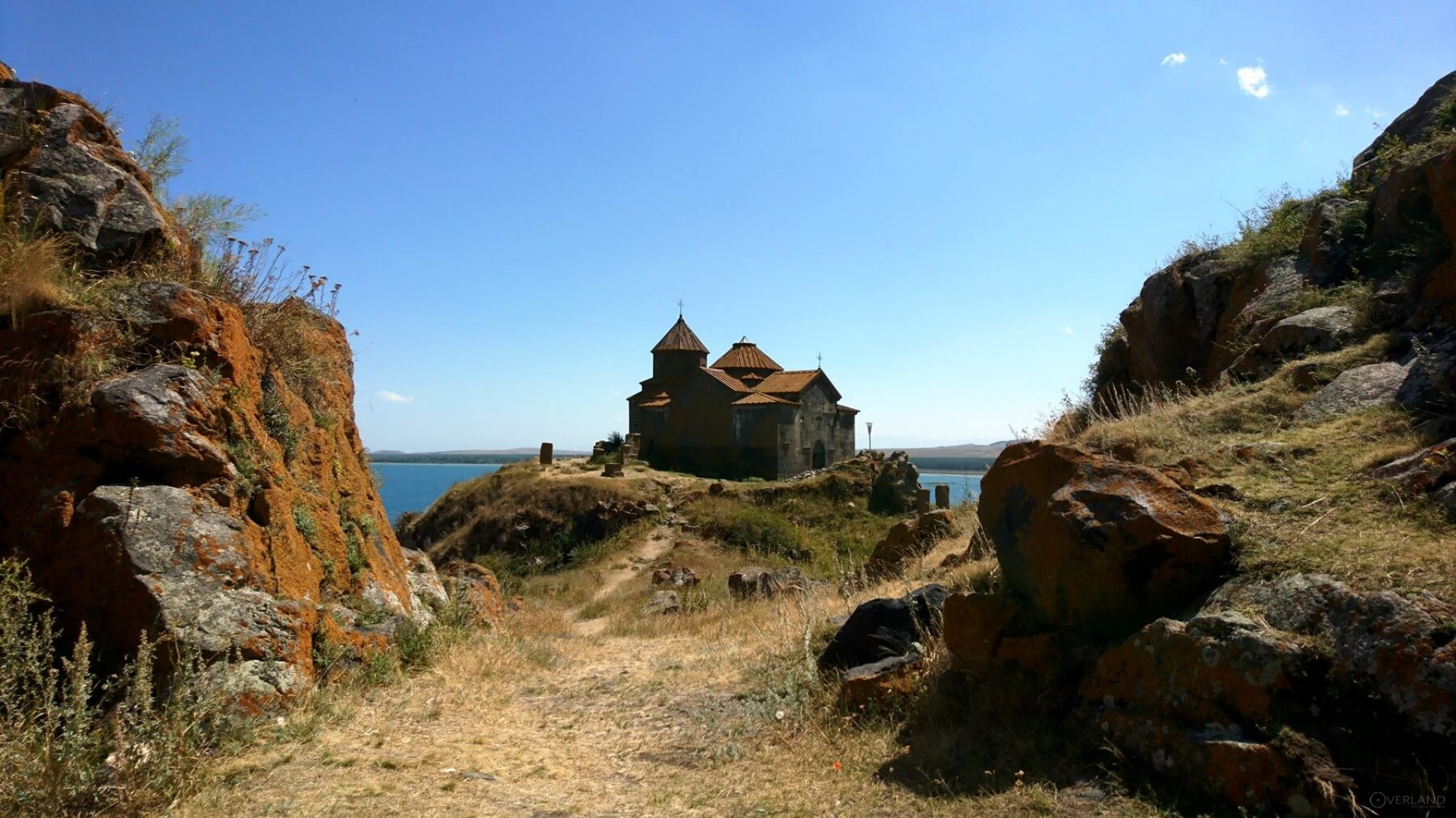
The monstery of Hayravank is situated on the shore of Sevan Lake, in Hayravan village, on a high cape, from where opens an amazing view to Lake Sevan. St. Stepanos church- the oldest structure of the monastery was built in the IV(IX) century. It's a church with four altars. It is the rarest example of Armenian (early) medieval architecture.
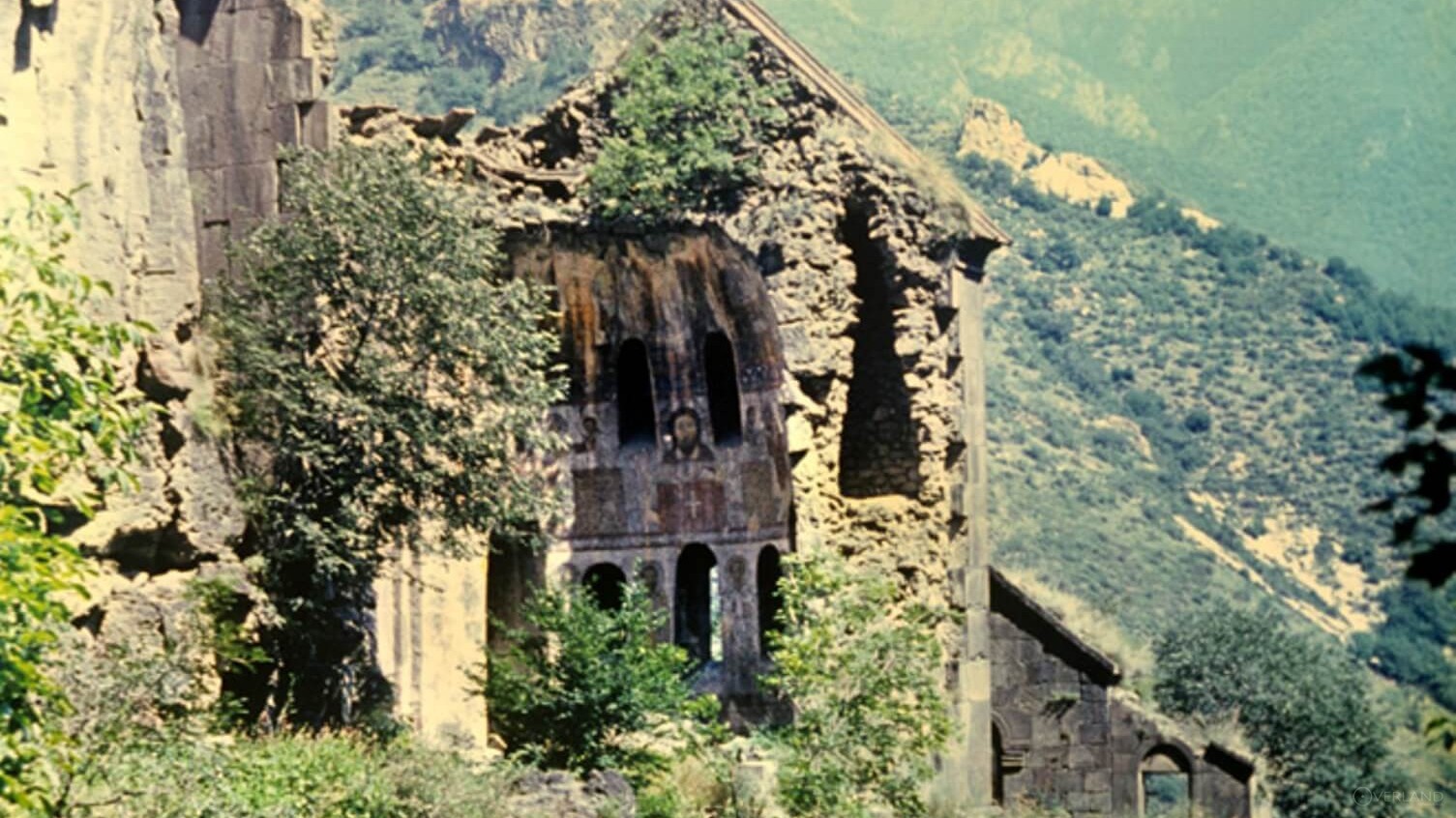
The monastery was built in 1171 by Princess Mariam, the daughter of Prince Kyurike B. Kyurikyan, in the place where one of the most ancient shrines of the region was located. Even though none of the structures of the monastery were preserved intact, the monastery doesn't stop to delight and impress.
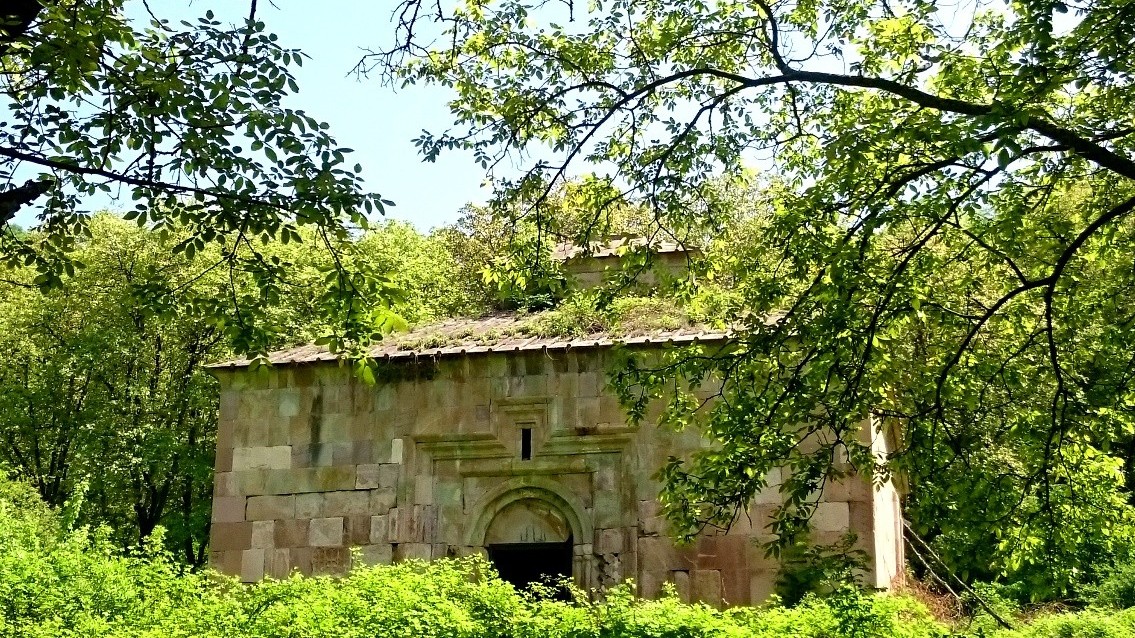
The name of the monastery Mshkvank is associated with the word MSHAK (stone-worker), and this is a rare phenomenon in the Church history of Armenia, when a Church or monastery is not named after a God or a Saint, or in honor of benefactors, but in honor of simple stonemasons.
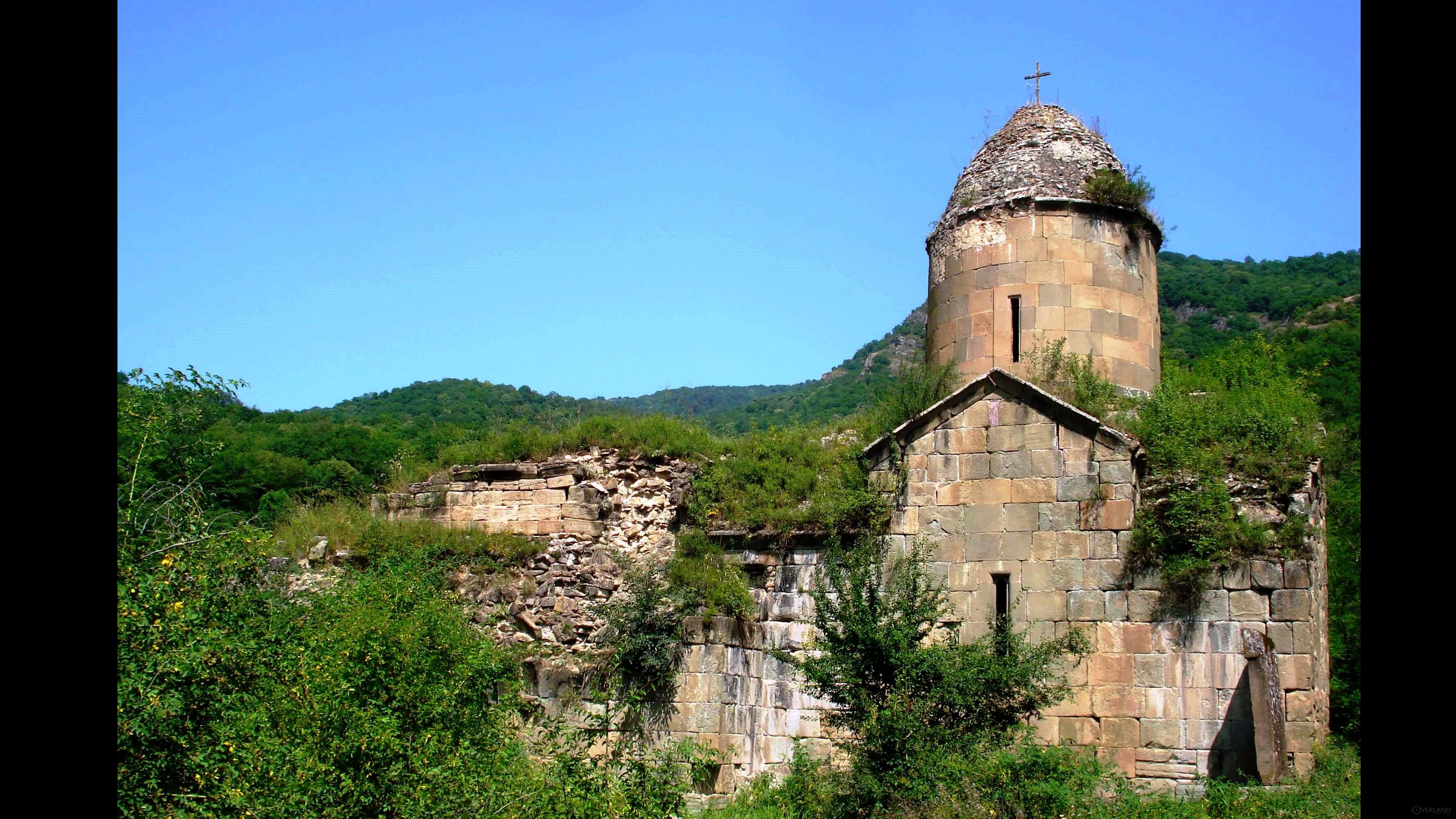
Arakelots monastery is located in the Tavush region of Armenia, on a wooded mountainside - on the Bank of the Kirants river. This is one of the most interesting monasteries in Armenia, which, unfortunately, has come down to us in a dilapidated state.
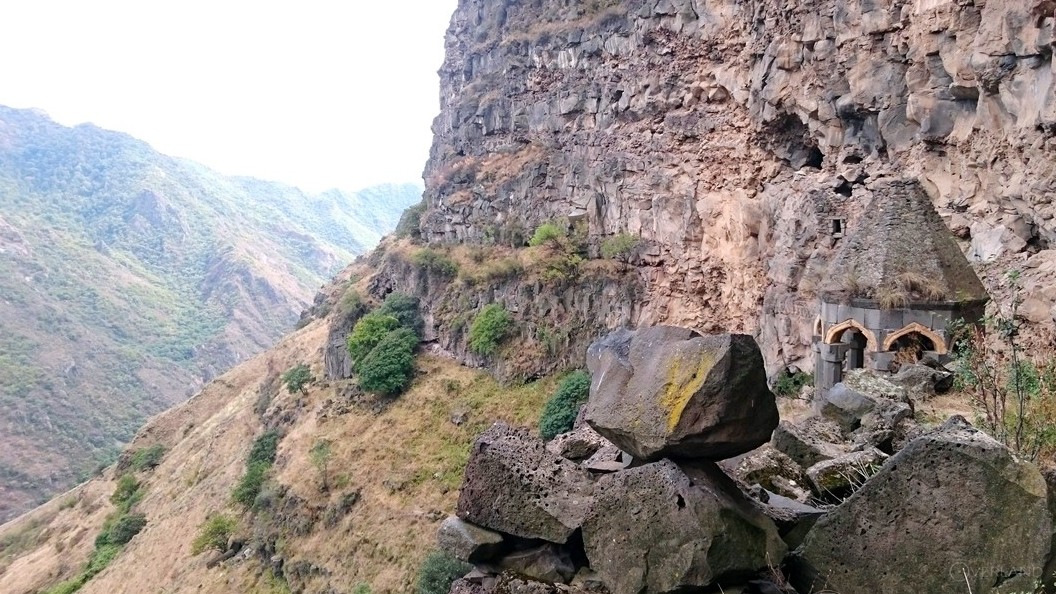
The monastic complex of Horomayr is one of the most mysterious and most important medieval architectural monuments of Armenia. The monastery is located 1.5 km Southeast of the village of Odzun. Horomayr stands on a hill in the Debed river gorge and is only one of the many amazing monasteries that lurk in the beautiful and mysterious gorges of Lori.
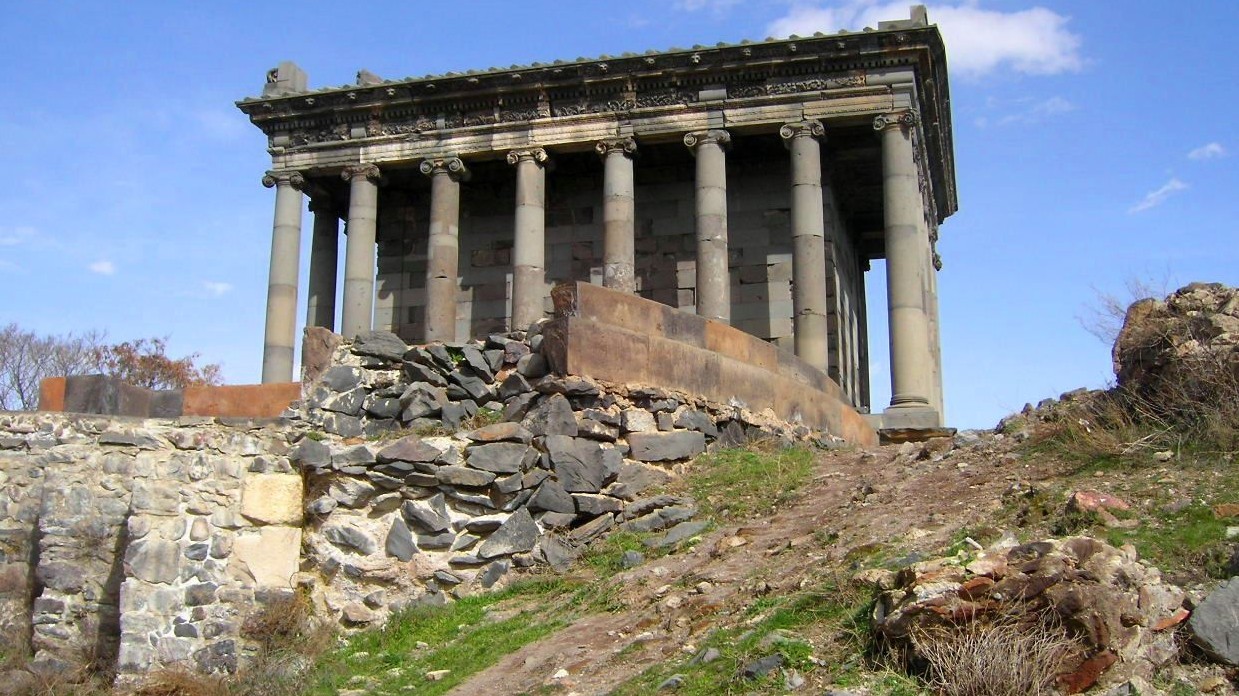
Thousands of kilometers from Rome and Athens, with their rich pagan pantheons and history, in the first Christian country is the only pagan temple in the former Soviet Union – Garni. Not only is the two-thousand-year-old temple amazing, but also the place where it was built.
Faith and religion have always played an important role, both in the tribes’ life- ancestors inhabited in the Armenian highlands, and in the life of already established Armenian people. Both at the times of pre-Christianity, and after.
The faith existed in Armenia before the adoption of Christianity, over time, endured great changes and went through several phases of development, in parallel with the development of the Armenians in the Armenian Highlands.
And, since the Bronze Age, the tribes living on that territory, allotted places, which were built as to worship their gods and deities. Those were the first temple prototypes. The first religious buildings, probably, were menhirs, cromlechs, vishapakars, etc. For example, vishapakars were devoted to the cult of water.
The religious buildings of Urartian period were already separate structures in the forms of a temple. So, on the high relief of Sarduri II chamber, there is a temple of the supreme god of Urartian mythology - Ḫaldi. According to this, the temple stands on a pedestal-base, from the front depicts a column hall of six columns, which are crowned with a triangular gable.
On the territory of western Armenia, there are preserved majestic sculptures of ancient Armenian Gods. This place is called Nemrut.
Unfortunately, the only pre-Christian temple that reached us is the temple of Garni. This temple was dedicated to Mihr- the God of Sun, who belongs to the next generation of gods in Armenian mythology. Here, the supreme God is Aramazd.
The temple of Garni was built in the 2nd half of the first century BC. The temple belongs to the peripteros of the Greek-Roman type. In the center of the podium, there is a naos with a height of 2.8 m and sizes of 15.7 x 11.5 m. From the front side the naos is surrounded by six, and from the lateral side- with eight columns. Nine wide steps lead to the entrance.
Unfortunately, the adoption of Christianity led to the loss of a large heritage of pre-Christian religious buildings.
After the adoption of Christianity as the state religion in 301, begins a new era of churches and monasteries construction in Armenia. Adopting Christianity, Armenians started to develop the Armenian architecture of churches. The first churches were built in the places of pagan temples, thus connecting the ancient sacred sites with a new religion. In some cases, the old temples were rebuilt, others were completely destroyed and new Christian churches were built on their sites. The first Christian temples had the same oblong shape as the pagan ones- stretching from east to west, except that in Christian churches the altar was moved from the west side to the east. At this time the constructive, structural and artistic principles had been formed, on the basis of which, the whole Armenian architecture was formed.
The first churches of IV-V centuries were basilicas without a dome- single-naved or
three-naved. Perhaps, some of them had a pagan origin, but the only preserved pagan temple Garni doesn’t lead to that conclusion. Single-naved churches are small and lowly decorated. Talin churches, Tanahat, and others belong to this type.
Three-naved basilicas have more complicated architecture and refer to the IV-VI centuries. In this case, a rather wide oratory is divided into three longitudinal naves with the help of pylons, the middle of which is wider. The church of Yererouk is an example of the three-naved basilica.
After the VI century, people stopped building basilica churches. The Armenian architects tried to create something new- Armenian domed churches. Different types of domed churches became dominant in the VI-VII centuries architecture. The various examples of churches, created at that time prove the power of thoughts and mastery of the Armenian architects. At this time, the whole system of dome’s structural forms was developed. The idea of making churches dome-shaped was taken from the construction of residential buildings.
It’s known that the first churches, as Ejmiatsin Cathedral were initially covered by wood. And only after reconstruction, a stone dome was built.
In the V-VI centuries, the foundations of new domed-churches was continued in two main directions. In the first case, basilicas were taken as the basis for creating dome basilicas, basilicas with three sacristies, dome halls, etc. In the second case, the cross-domed churches developed.
For example, the church in Odzun, St. Gayane church in Ejmiatsin belong to this type of church.
So, the Armenian church architecture, appeared in the V century was being developed in the following centuries. It included many techniques from civil architecture, as well as implemented many new ones to it. The external and internal cruciform churches (St. Tadeos in Bagaran), churches with many apses(Zoravar in Eghvarde), round-shaped
(multi-faceted )churches (Zvartnots) and many churches with different forms appeared.
In the IX-XI centuries, after a decline, during the Arabs invasion in Armenia, the constructionof churches began with new strength. At this time, more attention was paid to decorative art. To replace the magnificent simplicity of the VII century churches, here comes a unique trend of decorating churches. You can see these masterpieces by taking part in tours around Armenia, which are organised by our company.
Despite the fact that the dome continues to dominate, it takes on new views. Multi-faceted(Marmashen, Amberd) and cylindrical domes (Tatev, Haghpat, Sanahin) come to replace the octahedral domes.
The art of decorating churches, the processing of stone develops and rises to a new level. New decoration forms appear- ornaments of geometrical and floral forms that have reached their perfection in khachkars’ decoration. Fresco painting develops, too. The frescoes in Tatev, Haghpat, Akhtamar temples, with their content, harmony of color solutions and high craftsmanship are unique examples of that time’s monumental painting.
At the same time, separate architectural schools had been finally formed, which further developed this art.
Such schools were Syunik’s school, the masterpiece of which is Tatev monastery, Vaspurakan’s school (Akhtamar church, on the territory of West Armenia), Shirak’s school with Marmashen church, Gugark’s school presented by Sanahin and Haghpat monasteries.
In the XII-XIV centuries, more and more attention was paid to architectural solutions in the construction of monastery buildings, such as a porch, rooms of monks, libraries, and so on. The construction of Tatev, Sanahin, Haghartsin and Haghpat monasteries, which reached us in their original form, was basically finished. Belfries were innovations of this period’s church architecture. The belfries were built either separately in the monastery complex(as if in Tatev and Haghpat monasteries), or they were built next to already existing buildings.
In the following centuries, during the invasions of the Tatar-Mongols, and then of the Turks, the conditions for the development of churches weren’t the most favorable. As in many Christian countries, at that time, the church assumed the function of uniting people and protecting their interests. Despite this, not only the recovery of churches continued, but also new ones were built.
Unlike the early medieval monasteries, which were built gradually over a long time and were spontaneously designed according to natural conditions, the late medieval monasteries were built in a relatively short time and were raised on the basis of a previously existing plan. These include the monasteries in Mughni, Syunik, and Artsakh.
In the middle of the century, after the loss of statehood, not only the fortresses but also the monasteries served for protective purposes. The monasteries were engaged in providing their own safety. Both newly built and already existing monasteries were surrounded by defensive walls.
Over the whole history of Armenia, the monasteries played the most important role in people’s lives. They were religious, scientific and educational centres, where the great scientists of that time worked. A bright example is the monastery of Tatev, where was one of the most famous universities. The monasteries were also places for writing manuscripts and developing the art of miniatures.
In the most difficult times of Armenians history, the church served as the centre for uniting people.